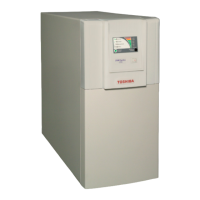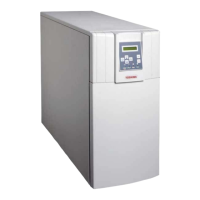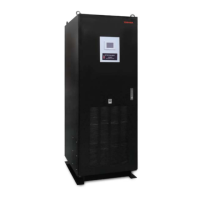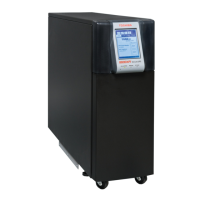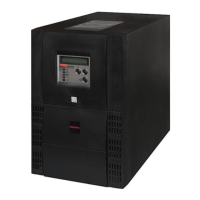
Do you have a question about the Toshiba 4200 series and is the answer not in the manual?
Explains the types of safety warnings used in the manual, including Danger, Warning, Caution, and Attention.
Instruction to keep safety information for future reference.
Critical safety precautions for handling and disposing of batteries, including potential hazards.
Explains how the Uninterruptible Power Supply functions in normal and failure modes.
Details the UPS's suitability for critical office equipment and features like audible alarms.
Describes how the UPS provides continuous power to loads during AC input failures.
Explains how the UPS protects against power line problems like sags, surges, and spikes.
Procedures for safely removing the UPS unit from its shipping crate and packaging.
Checking the unit for shipping damage and verifying its specifications against the order.
Guidelines for proper storage conditions, including temperature and humidity.
Instructions for environmentally sound disposal of UPS components and packaging.
Important considerations for UPS site installation, environment, and clearances.
Steps to take before connecting the UPS to a power source.
Guidelines for safe and effective UPS operation, including input voltage and load limits.
Wiring connections for UPS input and output terminals, including diagrams.
Proper routing for power connection cables to the UPS unit.
Wiring for control circuits and external battery connections for 75 and 100kVA models.
Details on RS-232C and AS/400 remote contact interfaces for system monitoring.
Technical specifications for 75 and 100kVA UPS models, including input, output, and environment.
Describes power flow during normal AC input operation, including rectifier and inverter functions.
Explains power flow during bypass mode due to overload or internal fault.
Details power flow when the UPS runs on battery power during an AC outage.
Information on battery backup duration and the discharge process under various loads.
Voltage levels triggering low battery alarms and automatic unit shutdown.
Graphical representation of the battery recharge process after a full discharge.
Overview of the UPS front panel controls, indicators, and display.
Functionality and operation of the Emergency Power Off switch for quick shutdown.
Explanation of audible alarm patterns and the conditions that trigger them.
Descriptions of the Light Emitting Diode (LED) indicators and their operational meanings.
Explains the Liquid Crystal Display (LCD) messages and system status indicators.
Procedure for charging the UPS batteries before first use or after prolonged storage.
Step-by-step guide to starting the UPS unit after initial setup or maintenance.
Step-by-step guide for safely shutting down the UPS unit.
Description of the 12-key data entry keypad used for UPS control and monitoring.
Explains the purpose and operation of each function key on the UPS keypad.
Details on accessing and adjusting system settings via the menu screens.
Describes UPS behavior, warnings, and automatic transfers during overload conditions.
Illustrates the electrical locations of protection devices on the UPS.
Details built-in fault protection functions and responses for various abnormal conditions.
Recommendations for keeping the UPS clean and performing annual internal inspections.
Intervals for periodic maintenance and replacement of UPS components like batteries and fans.
Diagrams and measurements of the UPS unit's physical size for installation planning.
Details on UPS shipping size and weight for logistics and handling purposes.



